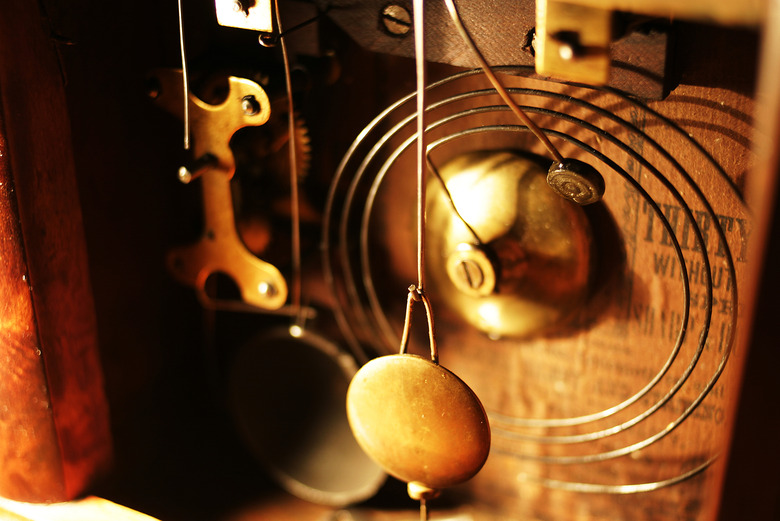The Use Of Pendulums In The Real World
Even before early scientists understood the gravity of the pendulum, they put it to work in all kinds of fields. The easily recognizable motion of a weight swinging steadily back and forth from a pivot is sometimes associated with mystical or poetic settings, like the swinging of a crystal in order to look into the future. In reality, though, pendulums have several practical applications in the real world and are still used frequently.
Telling Time
Telling Time
One of the most common uses for pendulums is to tell time. The first pendulum clock was built in the 1600s, and it was the most accurate way to tell time for nearly 300 years. Since the motion of a pendulum is a constant time interval, a pendulum inside a clock can keep the hands running on time. Often, as in the case of a grandfather clock, you can see and hear the pendulum at work as it oscillates back and forth to keep track of each second.
The downfall of a pendulum clock is that it is only accurate if it remains stationary. Since the 1930s, mobile clocks such as quartz and digital time tellers have become the norm, but you can still get a glimpse of a pendulum in antique clocks and new models of grandfather clocks.
Seismometers
Seismometers
Earthquakes are notoriously difficult to predict, but scientists as far back as the first century tried their best with the help of pendulums in seismometers. One of the first known pendulums at work was found in a seismometer from the Han Dynasty. Then, as today, seismometers measure seismic activity in the ground. The pendulum in the seismometer found from the first century activated a series of levers that directed a small ball to fall out of one of the instrument's eight holes. That way, ancient scientists hoped to know from which direction the earthquake was coming.
Now, seismometers are a little more advanced. When they detect movement, such as the shifting plates of an earthquake, a pendulum with a pen attached to it graphs the magnitude of the movement. If the pendulum swings vigorously, scientists know that the seismic waves are intense and potentially dangerous.
Metronomes
Metronomes
Reading music depends heavily on being able to play to a certain beat, but beginner musicians sometimes have trouble keeping that beat regular in their heads. They are often encouraged to use a metronome, a device that emits a click or a light for each beat of a predetermined interval with the help of a pendulum. Some metronomes also have a visual element, so a musician can look at the metronome's pendulum as if they were looking at a conductor's wand to keep their beat steady. If musicians need to focus on a new interval, they can adjust the length of a pendulum to their desired beat.
Cite This Article
MLA
Dragani, Rachelle. "The Use Of Pendulums In The Real World" sciencing.com, https://www.sciencing.com/use-pendulums-real-world-8417546/. 18 May 2018.
APA
Dragani, Rachelle. (2018, May 18). The Use Of Pendulums In The Real World. sciencing.com. Retrieved from https://www.sciencing.com/use-pendulums-real-world-8417546/
Chicago
Dragani, Rachelle. The Use Of Pendulums In The Real World last modified March 24, 2022. https://www.sciencing.com/use-pendulums-real-world-8417546/
